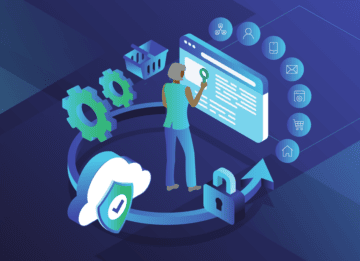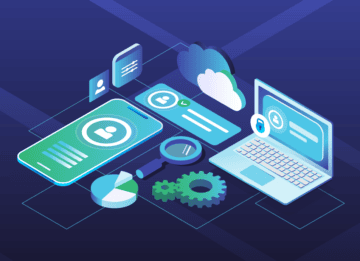How Automation Can Open You Up to the Human Side of Sales
Automation opening you up to the human side of sales sounds counterintuitive, doesn’t it?
Wouldn’t automation dehumanize the entire process?
If you’re automating everything, yes. But if you’re using it strategically, absolutely not. If anything, it allows you to connect with more prospects and customers on a more personal level.
How so? Glad you asked.
How Automation is Changing Sales
In sales, you have to juggle a lot of balls: prospecting, following up, nurturing, answering questions, providing information … and eventually, making the sale.
Much of that is tedious, repetitive, and takes away from the time you have to truly connect on a one-to-one personal level.
But what if, by automating, you could eliminate the laborious but necessary tasks from that list?
Nearly two-thirds (64%) of a typical sales rep’s day is spent on non-selling tasks. Automation can reclaim lost time, and make selling the lion’s share of how you spend your days – which is how it should be.
Sales Hacker reports that the average sales rep spends six hours each week prospecting on LinkedIn alone. Throw other social media platforms and channels like blogging, cold calling, and cold emailing into the mix, and it starts to add up.
Lead Discovery
Conventional wisdom says that if you’re not growing, you’re dying. That’s true – and leads are the lifeblood of business.
In the past, you’d have to track down leads and prospects on your own. You’d make a discovery call and hope that the time and energy you invested paid off with a qualified lead.
Sometimes it would, and sometimes it wouldn’t.
Since the discovery call is all about filling in the blanks, automation can take that task off your to-do list. Create a customizable email template that asks the right questions, personalizes where possible, and automatically sends to every name and email address as they’re added to your list.
No more calls until they’re ready to talk to you and close the deal.
Action-based Segmentation
Segmenting your email list is a must in the 21st century. Consumers expect only communication and content that’s relevant to them.
Segmented campaigns have open rates that are 14.31% higher, click-through rates that are 100.95% higher, and 9.37% fewer unsubscriptions than those that aren’t segmented.
An email marketing solution like Mailchimp or Mailshake can automatically segment your lists based on the action (clicks, opens, responses, etc.) taken by individuals on your master list, shunting them to different lists depending on what they do or don’t do.
Automated Follow-up Sequences
Here’s the cold, hard truth: a full 70% of unanswered email chains stop after just one message.
But recipients will respond on the third, fifth, and even tenth message they get. The takeaway? Follow-up, follow-up, follow-up.
With email automation, you set the number of days between messages, and the platform does the work. No response? It’ll send the next email in the campaign. Get a response? It’ll shift them to a separate list and send a notification so you can reach out personally.
And all without you spending another minute tediously tracking responses and wait times.
Chatbots
They’re everywhere now. And with good reason.
A chatbot keeps the lines of communication open even when you’re busy, asleep, or on vacation. 24/7.
They can answer questions, book an appointment, deal with a complaint, assist with a billing issue, and more. Chatbots are equally popular with both millennials and baby boomers for their convenience and ease of use.
In fact, 35% of people want to see more chatbots, and 40% don’t care if it’s a human or chatbot that assists them so long as they get the help they need.
If you removed those dreary tasks from your plate, how much more time would you have for real engagement and personal attention with qualified leads and existing customers? Hint: plenty.
How to Leverage Automation for Low-Touch Sales Activities
The bottom line is, sometimes you need a real live human, and sometimes you don’t. Identify those instances where you don’t, and you can add hours to your day through automation:
Prospecting. You need to do it, but what if you didn’t need to do it? List and data sourcing is one of the top sales rep challenges. Finding, verifying, and adding contact information to your CRM or marketing platform takes time. Instead, use a tool like Dux-Soup to automatically generate and export a list of potential prospects from LinkedIn based on your search criteria and keywords.
Lead enrichment. The name and contact details aren’t enough, of course. You need as many details as you can find. FullContact can turn a prospect fragment – email, Twitter handle, or phone number – into a fully realized prospect profile for you.
Lead scoring. All leads are not created equal. You need a way to highlight those leads that are engaged and connected enough to warrant a personal call from you. Services like HubSpot and Marketo can automatically score your leads based on demographics or interactions.
Meeting scheduling. An AI tool like X.ai can schedule, manage, and notify all necessary parties about appointments and meetings. You’re in the loop, but not in charge of it.
Programmed follow-up/lead nurturing. As mentioned above, follow-ups are crucial. An automated system doesn’t forget or make mistakes. Cold email outreach with automated follow-ups and nurturing will deliver more leads than a sales rep could ever hope to do manually.
Reporting, sending proposals, and more.
Automating all of this and more makes you more efficient and productive, freeing you to focus on activities that require a greater level of human touch.
Bringing In the Personal Touch
Both AI and machine learning have improved in recent years, but they’re not replacements for people. They serve as a starting point from which you can build more meaningful relationships. So how and when do you escalate to more personal contact?
- When you don’t really know your prospect. Automation can deliver a great deal of data, but when there are blanks and gaps, you need to reach out. Discuss. Ask questions. Discover exactly how you can make their life better and easier. Bond with them … because no bot can do that.
- Lead scoring reveals:
- Engagement with a certain number of pages or assets. They’re interested in you and what you have on offer. Connect. Nurture. Close the deal.
- Engagement with specific pages or assets. They’re interested in something quite specific. Connect. Nurture. Close the deal.
- Completed call with SQL with a high likelihood of closing.
- Completed call with SQL with certain opportunity amount.
- Complex deals with multiple decision-makers.
- Complex deals that require different products/solutions than what you usually offer.
- Chatbot hand-off. The bots can’t do everything, and when they reach their limits, they’ll turn to you for help.
- When you’ve gotten to know prospects personally. Once a personal relationship has been established, you need to feed and water it. Relationships are the foundation of any business. Never hand them off to automation and bots. Ever.
“If the ultimate goal is to close deals and increase revenue, some interactions require a level of personal attention that automation can’t (and very often shouldn’t) provide. If sales reps are using an automated marketing solution and it sends a follow-up email that says “Hey – haven’t heard from you in a while” to a prospect that’s about to close, it could torpedo the deal.” ~PersistIQ
Automation is the icebreaker. But you’re the dealmaker. Break more ice, make more deals. It’s really that simple.
What tasks have you automated to make more time for face-to-face contact with prospects?
Recent Blogs
-
 February 25, 2025 Introducing Email Signals: Unlock Powerful Email Engagement Insights Customer 360, Customer Experience, Marketing & Sales, Enrich API
February 25, 2025 Introducing Email Signals: Unlock Powerful Email Engagement Insights Customer 360, Customer Experience, Marketing & Sales, Enrich API -
 August 28, 2024 The Sales Rep's Guide to Maximizing Productivity with Website Visitor Data Acumen, Media Personalization, Marketing & Sales
August 28, 2024 The Sales Rep's Guide to Maximizing Productivity with Website Visitor Data Acumen, Media Personalization, Marketing & Sales -
 August 6, 2024 Turn Visitors into Leads: How to Install the Acumen Web Tag in 5 Easy Steps Acumen, Website Recognition
August 6, 2024 Turn Visitors into Leads: How to Install the Acumen Web Tag in 5 Easy Steps Acumen, Website Recognition



